Breeding
Redfoot tortoises start breeding when they are 6-8" long. At the smaller size clutches are small and eggs are often infertile. Larger tortoises seem to be more successful in producing fertile eggs.
My breeding colony has 6 females and 2 males. They range in size from 10" to 14". I have read in a number of places that the males will fight, but its necessary to stimulate reproduction. Head bobbing between males leads to ramming in an attempt to overturn each other.
However in my colony, I haven't seen any of this behavior. The males tend to ignore each other. Also two of my females actively seek out males and if the male acts uninterested one female will keep nudging the male with her rear end.
Males have an extremely concave plastron and some have a constricted "waist" that give them a peanut shape. Females usually have a flat plastron though it can be slightly concave
Click on the image to view full size
 The male's waist can be seen. In some males its much more prominent |
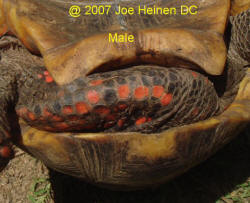 |
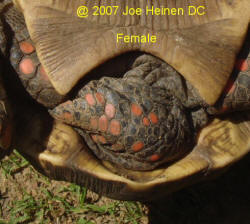 |
 Here you can see the male's concave plastron |
The most important aspect of successful breeding, besides size, is diet. I have found that the largest clutches with the highest hatch rate occur when they are fed a great variety of food and a source of animal matter a few times a week. Some of the best sources of animal matter are mouse pinkies (frozen...thaw before feeding), salmon canned in water, boiled eggs, boiled chicken, chicken livers, turtle brittle, butterworms and Aquamax trout chow.
If diet is inadequate, egg production slows down. Also the yolk may not contain enough nutrients to allow the embryo to fully develop. This is one of the causes of "dead in the shell"...a condition where the tortoise develops to almost hatchling size and dies before hatching. I feel this also contributes to "failure to thrive"...a condition where the egg hatches but the hatchling doesn't do well and eventually dies despite proper care.
Mating starts with the male walking closely behind the female. He will slowly try to mount her while letting out a series of low grunts. Click here for an audio of the mating sounds.
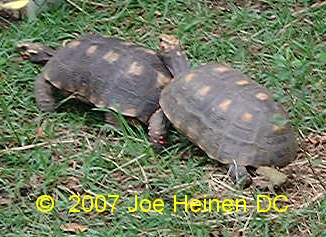 |
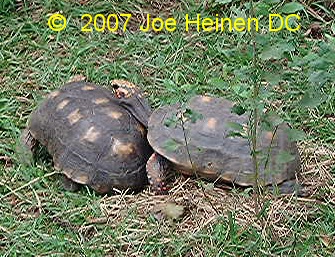 |
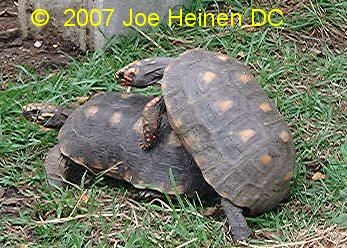 |
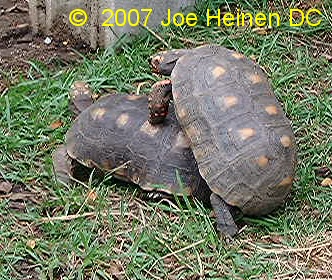 |

